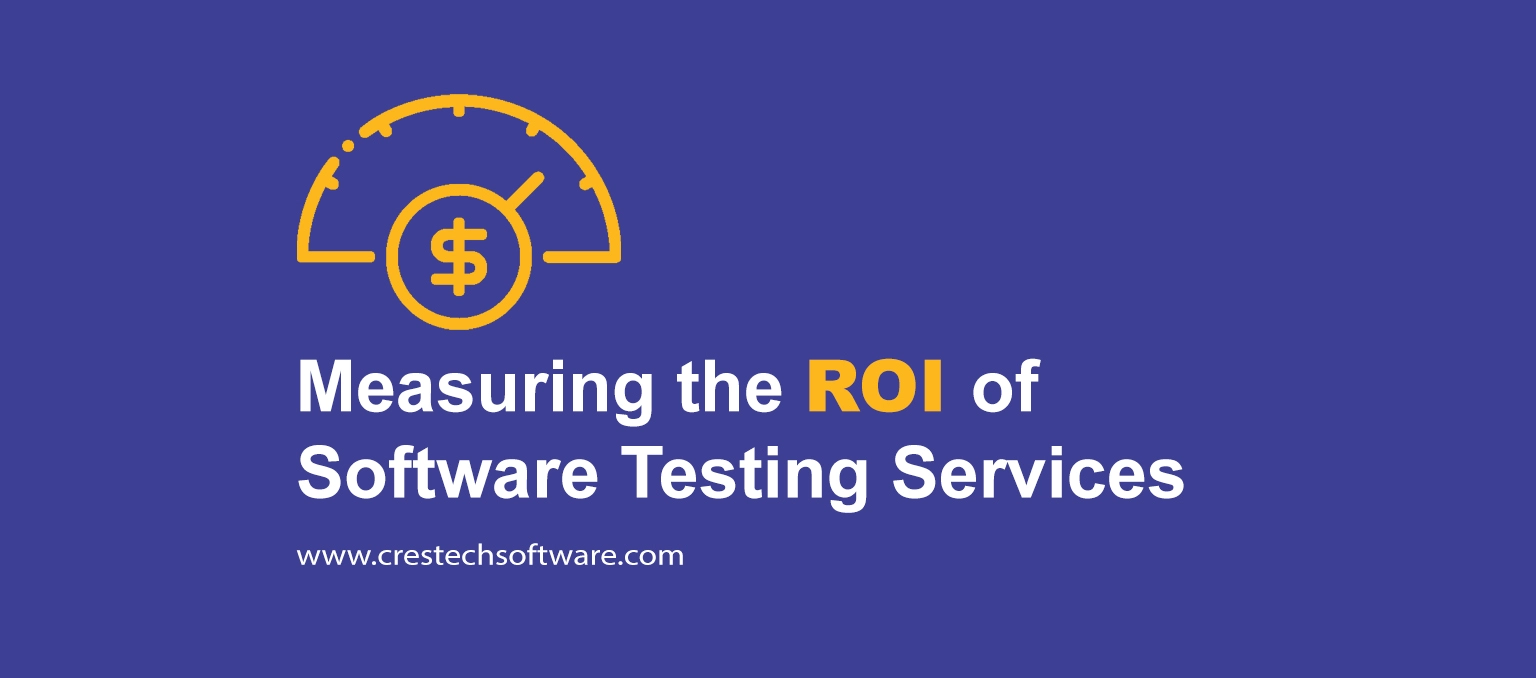Software testing plays a crucial role in ensuring the quality and reliability of software products. As businesses increasingly rely on technology to operate and provide services, the demand for effective software testing services has grown significantly. However, like any other investment, businesses need to assess the return on investment (ROI) of software testing services to make informed decisions about their testing strategies.
In this blog, we will explore the concept of ROI in the context of software testing, discuss the challenges in measuring ROI, and explore various metrics and approaches to effectively measure the ROI of software testing services.
1. Introduction to ROI in Software Testing Services
ROI is a financial metric used to evaluate the profitability and efficiency of an investment. In the realm of software testing, ROI refers to the tangible and intangible benefits gained from the resources invested in testing activities. It helps businesses understand whether their investment in software testing is delivering value and whether the testing efforts align with their overall business objectives.
The primary goal of software testing is to identify and fix defects, reduce risks, and ensure that the software meets its intended functionality. However, testing can be resource-intensive, and without proper assessment, it may be challenging to determine if the investment is justified.
2. Challenges in Measuring ROI of Software Testing Services
Measuring the ROI of software testing services can be complex due to several factors:
2.1. Indirect Impact on Business Metrics
The impact of software testing on business metrics is often indirect. For example, reducing the number of defects may lead to increased customer satisfaction and reduced support costs, but the direct correlation between testing efforts and these outcomes may not be immediately apparent.
2.2. Long-term Benefits vs. Short-term Costs
Software testing can yield both short-term and long-term benefits. While defects identified and resolved in the testing phase can save immediate costs, the prevention of defects in the production environment can have long-term cost-saving effects. Balancing short-term costs with long-term benefits can be challenging when measuring ROI.
2.3. Complexity of Software Systems
Modern software systems are increasingly complex, comprising multiple components, integrations, and interactions. The effectiveness of testing efforts may vary across different components, making it difficult to attribute ROI accurately.
2.4. Intangible Benefits
In addition to direct cost savings, software testing services can bring intangible benefits such as enhanced brand reputation, increased customer trust, and improved team morale. These intangible benefits are challenging to quantify in monetary terms.
2.5. External Factors
External factors, such as changes in the market, competitor actions, or regulatory requirements, can impact the ROI of software testing services. Isolating the effects of testing efforts from these external influences can be demanding.
3. Metrics to Measure ROI of Software Testing Services
To overcome the challenges in measuring ROI, businesses can adopt various metrics and approaches that provide valuable insights into the effectiveness of their testing efforts. Some key metrics include:
3.1. Defect Density
Defect density is a measure of the number of defects identified during testing per unit of software size (e.g., lines of code or function points). Tracking defect density over time can help identify trends and assess the impact of testing on defect reduction.
3.2. Cost of Quality (CoQ)
The Cost of Quality encompasses the total costs associated with testing and dealing with defects, both internally (testing efforts, defect fixes) and externally (customer support, reputation damage). By comparing the CoQ before and after implementing testing services, businesses can evaluate the effectiveness of their testing efforts.
3.3. Test Case Effectiveness
Test case effectiveness measures the ability of test cases to identify defects accurately. A higher test case effectiveness implies that testing efforts are focused on the most critical areas of the software, leading to improved ROI.
3.4. Test Automation Coverage
Test automation can significantly improve testing efficiency and effectiveness. Tracking the percentage of test cases automated can provide insights into the ROI of automation efforts, considering the reduction in manual testing effort and the potential for early defect identification.
3.5. Time-to-Market
Reduced time-to-market is a critical factor in gaining a competitive advantage. Measuring the time taken to identify and fix defects can help assess the impact of testing on overall development timelines and time-to-market.
3.6. Customer Satisfaction and Retention
Satisfied customers are more likely to be loyal and recommend the software to others. Surveys and feedback from end-users can help gauge customer satisfaction, indirectly reflecting the impact of testing efforts on customer experience.
3.7. Risk Mitigation
Software testing plays a crucial role in identifying and mitigating risks associated with software failures. By evaluating the risks averted due to effective testing, businesses can quantify the value of risk reduction.
4. Approaches to Measure ROI of Software Testing Services
Businesses can employ various approaches to measure the ROI of software testing services. Some common approaches include:
4.1. Pre-Post Comparison
In this approach, businesses measure key metrics before and after implementing software testing services. By comparing the metrics, such as defect density, time-to-market, and customer satisfaction, businesses can assess the impact of testing efforts on the software’s quality and overall business performance.
4.2. A/B Testing
A/B testing involves dividing the software users into two groups: one with testing and another without testing. By comparing the performance and customer satisfaction metrics between the two groups, businesses can isolate the effects of software testing on the user experience and ROI.
4.3. Return on Investment Ratio (ROIR)
The ROIR is a simple ratio that compares the financial benefits gained from software testing (e.g., reduced support costs, increased sales) to the total cost of testing services. A positive ROIR indicates a positive return on investment.
4.4. Sensitivity Analysis
Sensitivity analysis involves assessing the impact of varying testing efforts and budgets on the ROI. By simulating different scenarios, businesses can identify the optimal level of testing investment to maximize ROI.
4.5. Benchmarking
Benchmarking involves comparing the ROI of software testing services with industry peers or best practices. This approach provides insights into whether the testing efforts are on par with industry standards and can help identify areas for improvement.
5. Conclusion
Measuring the ROI of software testing services is essential for businesses to make informed decisions about their testing strategies. While challenges exist in quantifying the impact of testing efforts, adopting appropriate metrics and approaches can provide valuable insights into the effectiveness and value delivered by software testing services. Businesses should strive to strike a balance between short-term cost savings and long-term benefits, considering both tangible and intangible factors that contribute to ROI. By continually evaluating and improving their testing practices, businesses can ensure that their software products meet the highest standards of quality, thereby enhancing customer satisfaction and driving business success.
In conclusion, the ROI of software testing services goes beyond immediate cost savings and extends to improved product quality, reduced risks, and enhanced customer satisfaction. Investing in effective testing practices is an investment in the success and reputation of the business in the long run.


